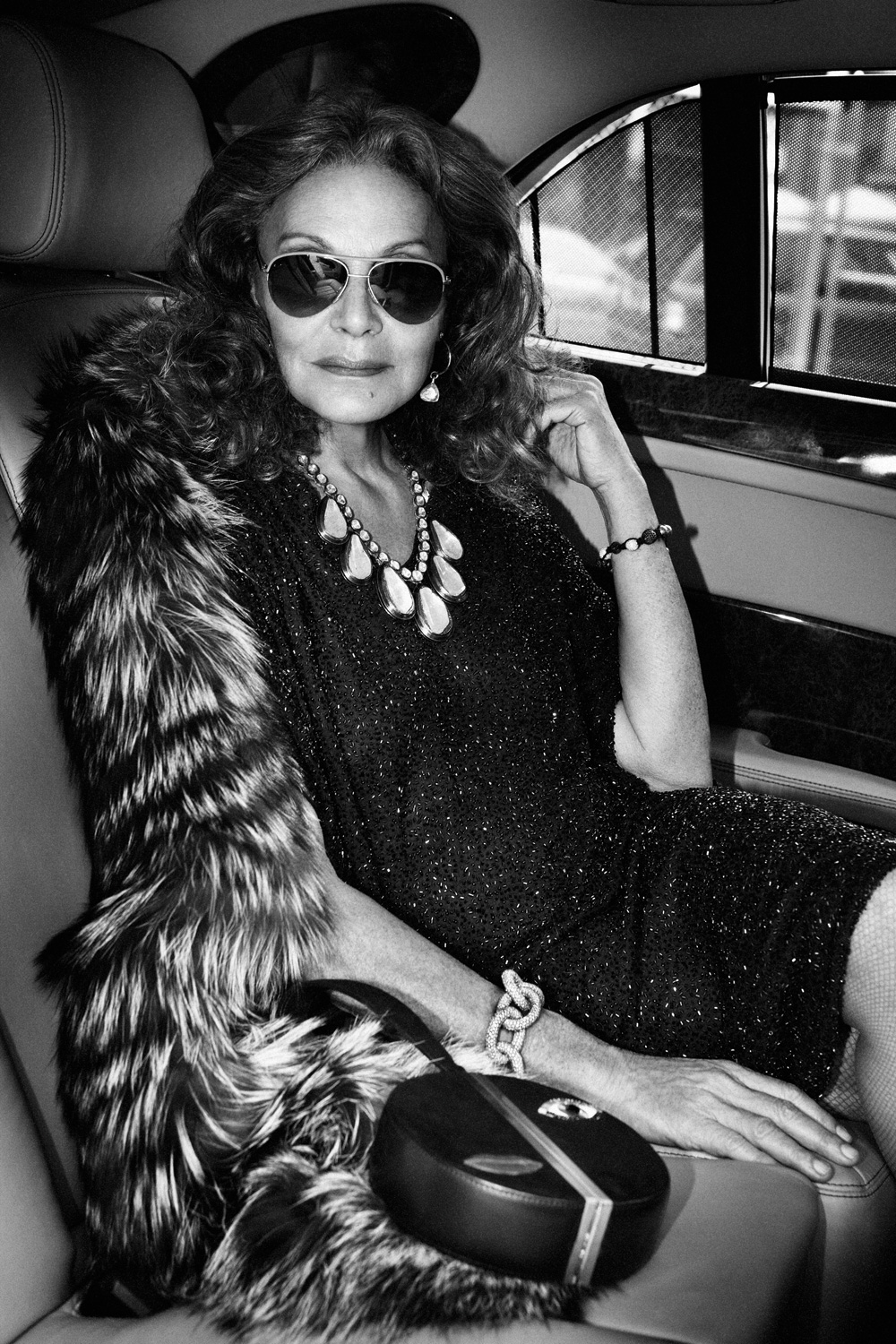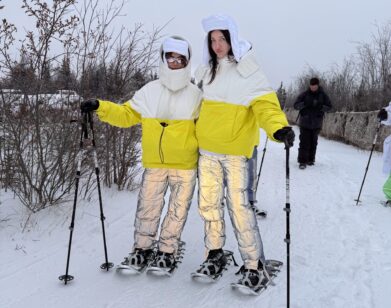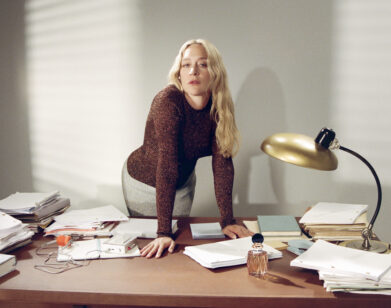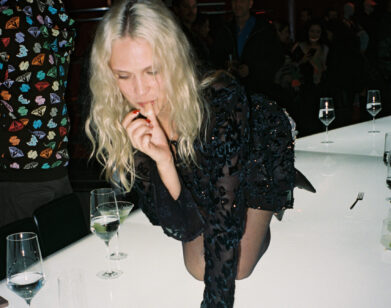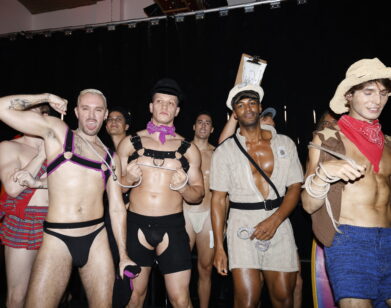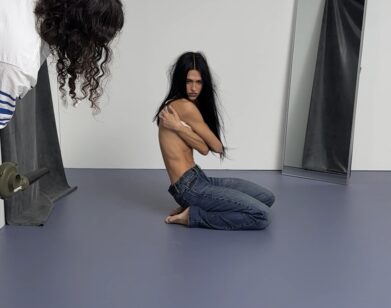Diane Von Furstenberg
I really sell confidence, because confidence is what allows you to design your life and be the person you are or want to be.Diane von Furstenberg
She is fashion’s ultimate seductress. The eyes. The curls. The accent. The Rolodex. The clothes. She made her first samples in 1969, and by 1976 she had turned the wrap dress—that waist-tied, curve-hugging essential—into a 20th-century icon of design and desire on par with the Eames chair, the BMW 2002, and Chanel No. 5. She and her then-husband Egon, who was heir to a noble German family whose roots date to the 11th century and nephew of the legendary Fiat chairman Gianni Agnelli, became two of Studio 54’s most glamorous regulars. (And she appeared on the cover of Interview twice: in 1977 and 1981.
The story of Diane von Furstenberg—the woman, the designer, and the brand—is not just one of ascents. By the early 1990s, the DVF label had sunk into a slough of Halston-esque despond. But the woman, who had become an icon of feminine power and independence, took back the wheel and pulled off one of fashion’s greatest comebacks. Revived, redesigned, and relaunched in 1997, her simple, sexy, and self-assured wrap dress landed not only on the backs of a whole new generation of women—Gwyneth Paltrow and Madonna among them—but in the collection of none other than the Smithsonian itself (the Institution included it in its National Museum of American History in 1979). In 2005, the Council of Fashion Designers of America gave von Furstenberg a lifetime achievement award and the following year made her president—a position she has held ever since. Although Belgian by birth, von Furstenberg has become something of American fashion’s godmother, and the American immigrant story of hard work and success is an essential part of her lore.
More recently, von Furstenberg has made some savvy business decisions with her brand—chief among them bringing on designer Yvan Mispelaere in 2010 to serve as creative director. Together they have expanded Diane von Furstenberg with capsule lines, accessories, and, as the Fall 2012 collection proves, a confident, sultry woman’s uniform perfect for the kind of woman von Furstenberg herself has always been: strong, sexy, independent, and undeterred in her resolve to make her own way through the world.
This interview was conducted this past July in the office of von Furstenberg’s design studio on West 14th Street in Manhattan. At 65 years old, von Furstenberg looks as beautiful and as seductive as ever.
DAVID COLMAN: It looks great in here. Are those chairs new? [points toward modern dining chairs with zebra-skin seats] I don’t feel like I remember them.
DIANE VON FURSTENBERG: No, they’ve been around. Barry [Diller, von Furstenberg’s husband] gave them to me. A long time ago.
COLMAN: So, I actually read through old interviews of you from Interview, as you were on the cover twice. I thought I’d start by asking you a question that Iris Love asked you in 1981: Do you believe in reincarnation?
VON FURSTENBERG: Do I believe in reincarnation? Well, let’s say that I believe in karma. I think you make your own karma. If you’re a good person, the goodness will continue through your descendants. But do I believe in total reincarnation? I don’t know…
COLMAN: So it’s this sort of karmic Darwinism.
VON FURSTENBERG: Yes. I think that your good deeds remain and continue to do good.
COLMAN: Now, you have always been incredibly sexy.
VON FURSTENBERG: Not at my age.
COLMAN: Yes, you are. You’ve got it, let me tell you. You’re still a femme fatale.
VON FURSTENBERG: Femme fatale? Okay, I like that. You know, in my exhibition “Journey of a Dress” that went to China last year, I did four fashion moments: “American Dream,” “Studio 54,” “Working Girl,” and “Femme Fatale.” I always wanted to be a femme fatale. Even when I was a young girl, I never really wanted to be a girl. I wanted to be a woman.
COLMAN: I find it hard to believe that you were ever a girl. I’ve never seen proof.
VON FURSTENBERG: I just happen to have here . . . Here. See? [shows a photograph of herself as a child].
COLMAN: Wow! That smile is so dangerous. Trouble is what I see in this smile. Where was this taken?
VON FURSTENBERG: At the seaside in Belgium.
COLMAN: Do you ever go back there?
VON FURSTENBERG: They love me in Belgium. But when I was young, all I wanted was to run away. Somebody asked me the other day, “Do people perceive you as European or American?” I think people identify me with New York, but I’m clearly European. My father emigrated from Russia, and my mother was from Greece. I was born in Belgium. I went to school in England and in Switzerland, then I came to America, so I really feel like I am a citizen of the world.
COLMAN: How did you meet Egon?
VON FURSTENBERG: I met Egon at an 18th birthday party in Geneva, and we were both at university. We were 18 or 19. I studied economics but I really never got into it.
COLMAN: So you were like, “Get me out of here” and you moved to New York with Egon?
VON FURSTENBERG: Egon moved here first. He was doing a training program at Chase Manhattan Bank. I was working for an Italian clothing manufacturer in Como. I came to New York for a month and stayed with him and I really liked it, then I went back to Italy. Then Egon came to Rome in May and we got engaged, and he went on a trip around the world. I went back to Como; then I found out I was pregnant, and we were married three months later. I came to New York in October of ’69.
COLMAN: That’s a very glamorous time to get married and move to New York. Was it a great year for you?
VON FURSTENBERG: I was appalled because I thought, Oh my god, Egon is such a good catch, he is so handsome and from such a good family, everybody’s gonna think I did this on purpose. And that, of course, made me want even more to say, “I have to be independent.” So I told the people I was working for, “I’m getting married and I am pregnant, but I want to be independent. Will you allow me to make a few dresses—a few samples—in your factory?” And he said, “Okay,” and that’s what I did.
COLMAN: And the rest is . . . well, the wrap dress is in the Smithsonian! How does that feel?
VON FURSTENBERG: You know, when they asked me for it, I didn’t even know what the Smithsonian was. This is so embarrassing.
COLMAN: No, it’s so cute!
VON FURSTENBERG: I was such a stupid little girl. You don’t realize, I lived this American dream but I was so young.
The first time was the American dream, the second time was the comeback kid, and now we are a real business.Diane von Furstenberg
COLMAN: You’ve had so many kinds of triumphs. What are the moments that you look back on and think of as triumphs? I know, for me, I sometimes don’t even remember the best moments because I was too busy at the time to stop and enjoy them. But for you, was it something like that Newsweek cover story in 1976, or were you just doing too much to really appreciate it?
VON FURSTENBERG: It’s funny, actually, I do remember the moments. I remember the Newsweek cover was pretty amazing. The Interview cover was almost more amazing because not only was it the cover, but I worked with Ara Gallant to do the photograph, and he was my friend. It was very late at night when we shot that, 12 or 1 o’clock in the morning, and I did a beautiful picture with my hair all straight and he said, “Okay, now that we have that, let’s wet your hair.” I said, “What do you mean ‘wet your hair’?” I said, “No, I have curly hair!” He said, “Let’s wet it.” And then we wetted it and, of course, that’s the picture that came out. From that moment on, I wore my hair curly.
COLMAN: It really accentuates your cheekbones.
VON FURSTENBERG: Another great moment was my first ad at Bloomingdale’s and my first personal appearance. And, of course, when my son and my daughter were born. And then, much later, when I got my Lifetime Achievement Award from the CFDA, that was a major point. When I became president of the CFDA, when I had my first grandchild, when I had my exhibition in China and in Russia, when I had my first shop in Paris—those moments were all a big deal. Or when I reissued my very first dress and Mrs. Obama wore it for her first Christmas card. All of those are big milestones.
COLMAN: You had a massive comeback in the late ’90s. Was that unexpected?
VON FURSTENBERG: It was very scary. I had a really difficult time. My brand, which I consider like a child, had become just awful, just nothing. And then that happened, and I really had no idea whether it was going to work, getting young girls wearing the clothes. Gwyneth Paltrow, who was then in her 20s, started wearing the wrap dress. When Madonna and Demi Moore hosted the Oscar party in 2008, both wore gold Diane von Furstenberg wrap dresses. Then I did that American Express commercial and they ran it during the Oscar broadcast.
COLMAN: I can remember before all that happened, back when I was in college in the late 1980s, seeing Diane von Furstenberg paper towels with your signature on them. This isn’t meant as a criticism—it’s just what designers did at that moment. I was like, “I’ve got to have these!” And then I bought them and had them in the plastic for so long.
VON FURSTENBERG: You know, that was a joke of Sandra Bernhard’s at the time. She was doing me with the paper towels. I never saw it, but people tell me it was a funny skit.
COLMAN: Did you do an ad for the paper towels?
VON FURSTENBERG: No, but I think I went on David Letterman for it. I would actually like to get a copy of that.
COLMAN: Those paper towels must be collector’s items now. How did you go from a low point with the brand in the mid-’90s to getting it back under control and putting it into gear?
VON FURSTENBERG: There are always obstacles. I have a way to embrace obstacles and process them to make them work for the best, so I don’t remember them as obstacles. But I have had a lot of them. And right now, it’s very funny because I’m again very much at a turning point in my company where I feel like, Okay, the first time was the American dream, the second time was the comeback kid, and now we are a real business.
COLMAN: I’ll say.
VON FURSTENBERG: I have to go to the next level. I have to do a lot of cleaning up and a lot of therapy—business therapy—and put together a brand book. So that’s always painful, but it’s very important.
COLMAN: I assume you’re on much better financial footing now than you were, even at your height in the late ’70s, no?
VON FURSTENBERG: Yes. It’s very different. I’m writing a book now tentatively called The Woman I Wanted To Be, and I’m really putting my soul into it. I’m grabbing a lot of things.
COLMAN: Who is the woman you wanted to be? Is she around here somewhere?
VON FURSTENBERG: Well, it’s really who I am. The thing that is interesting is that while I went through the process, sometimes painfully, I realized that was also my message and that’s also what I sell. I really sell confidence, because confidence is what allows you to design your life and be the person you are or want to be. You can actually design your life, but it’s a lot of work. It’s a lot of truth and it’s a lot of self-searching and honesty with yourself, which is not necessarily pleasant. I shouldn’t talk too much about the book because I don’t plan on delivering it until the end of the year, but I am in the early fall of my life—if I’m lucky—or at the end of the summer, so I have a lot to look back on. I’ve had a lot of experience in terms of women and what women want. And I now have a new creative director who’s very, very talented.
COLMAN: Yes, Yvan Mispelaere.
VON FURSTENBERG: His last job was at Gucci, but prior to that he was at Chloé and Valentino. He has a very good pedigree. And he’s French, so our education is very much the same.
COLMAN: Maybe this is a naïve question, but how much are you involved in the day-to-day design of the line?
It’s this moment of my life where you take all the fruits you’ve planted, and see your children become parents, and see your grandchildrenDiane von Furstenberg
VON FURSTENBERG: Well, I am the brand, so it has to be all of the things that this brand represents. It’s got to be confident. It’s got to be sexy. It’s got to be glamorous. It’s got to be easy. It’s got to be practical. It’s high life, but people can afford it, so it’s aspirational and inspirational—it’s empowering. It’s all of those things. And now we are launching accessories, and we have been working really hard at that. I am the company, but you can’t do it all by yourself. More often than not, I will start with a theme, and then I’ll consult with Yvan because I wanna make sure that it excites him. And I’m also a muse, so I know how to work with designers. I know how to create that magic.
COLMAN: I remember you would bring your last creative director, Nathan Jenden, out on the runway with you at the end of your show.
VON FURSTENBERG: I love giving credit to people because I think it’s a nice thing to do and it doesn’t take anything away from me. Generosity is very important. That’s another thing that you learn in the early fall of your life—or let’s say the end of the summer.
COLMAN: The September month, you mean. September’s a very big month in fashion.
VON FURSTENBERG: I love the autumn. I also love five or six o’clock in the afternoon. I love sunset time. It’s a beautiful time because you take all the energy of the day and have a moment of meditation. It’s this moment of my life where you take all the fruits you’ve planted, and see your children become parents, and see your grandchildren—
COLMAN: How old are your grandchildren now?
VON FURSTENBERG: I have one 13, one 12, one almost 11, and one about to be born.
COLMAN: Really? That makes me very old. I was at Brown with Tatiana [von Furstenberg’s daughter], so I’m a little older than her.
VON FURSTENBERG: And you know who’s coming for lunch after this interview? Vartan Gregorian [former president of Brown University].
COLMAN: Oh, really! My mother was at Stanford with him and she remembers when he shaved his head. This was 1959.
VON FURSTENBERG: You can tell him.
COLMAN: Here’s another question for you: Where did the lips in your logo come from?
VON FURSTENBERG: That’s a very good question. The lips came exactly from the Interview cover we mentioned.
COLMAN: It really is the best logo.
VON FURSTENBERG: It came out of the Warhol of the ’70s, the Warhol of the ’80s, and the two covers of Interview—out of this picture that Ara took. So they’re actually my lips.
COLMAN: You have very famous lips. I know that you love nothing better than hiking. What are your favorite hikes in the world?
VON FURSTENBERG: I think my favorite hike is actually Stromboli. I love, love, love volcanoes.
COLMAN: Didn’t you have a perfume named Volcan d’Amour?
VON FURSTENBERG: I did.
Colman: And you are also a tech junkie, are you not?
VON FURSTENBERG: No, but I sleep with my iPad. I’ll give you a DVF iPad cover in black-and-white, which you can use. There’s one in leather, but I actually prefer these. [holds up a black and white geometric print cover] They’re really fun. It’s super-DVF. Hold on, I’ll sign it. You can sell it on eBay when I’m dead.
COLMAN: Never! Do you take a lot of pictures?
VON FURSTENBERG: Yes, all my life I wrote in my diary, but now I keep a visual diary. I love taking pictures, and I’m quite good at it.
COLMAN: I bet. What kind of camera do you have?
VON FURSTENBERG: The one I always have with me is the Canon G12. Wait, I’m gonna take a picture of you.
COLMAN: Well, okay. You probably want the profile. Everybody always wants the profile.
VON FURSTENBERG: No, you look handsome! [takes a photograph]
COLMAN: Would you sleep with me?
VON FURSTENBERG: Yeah, I would sleep with you. I think you’re hot. I mean, I wouldn’t anymore!
COLMAN: What? Why not? Because you’re in the late summer of life? Okay, returning to business, how much longer do you think you’re going to stay with the CFDA?
VON FURSTENBERG: They keep on renewing me, even though one of my ideas was that you could only be there two years.
COLMAN: You and Mayor Bloomberg are like that.
VON FURSTENBERG: We did a lot of work together. The truth is that it’s only because I’m about to start some things with the CFDA that are going to be major.
COLMAN: It must be exciting to be the president of the CFDA as New York has really become the world’s fashion capitol.
VON FURSTENBERG: Really? I don’t know. It’s made progress. I think it’s still Paris.
COLMAN: But the excitement seems to be here more than there. So what are you most excited about at this very moment?
VON FURSTENBERG: My accessories, I’m very excited about the accessories. I’m excited about going to the next step. I’m just excited, period.
COLMAN: But you’re mellow-excited. You don’t seem to get overly excited.
VON FURSTENBERG: No, I get excited. Are you kidding? But I don’t get hysterical. [Vartan Gregorian, now the president of the Carnegie Corporation of New York, comes in to have lunch with von Furstenberg.] Oh, you’re here!
VARTAN GREGORIAN: I don’t want for you to get up.
VON FURSTENBERG: I just found out something about you! David was at Brown with Tatiana. But, much more interesting than that, his mother was at Stanford with you! And he said she said you shaved your head.
GREGORIAN: What was her name?
COLMAN: Barbara Church.
GREGORIAN: I knew her very well.
VON FURSTENBERG: You know, David, the best thing that Vartan’s grandmother said, and I quote it all the time, is, “There are two things you must remember in life: One thing is kismet, and there’s nothing you can do about that—you have no control. And the rest is your character, and that, you have 100% control. You could lose your mother or your father, or your wealth or your health, but you never lose your character.”
DAVID COLMAN IS A NEW YORK–BASED WRITER.

